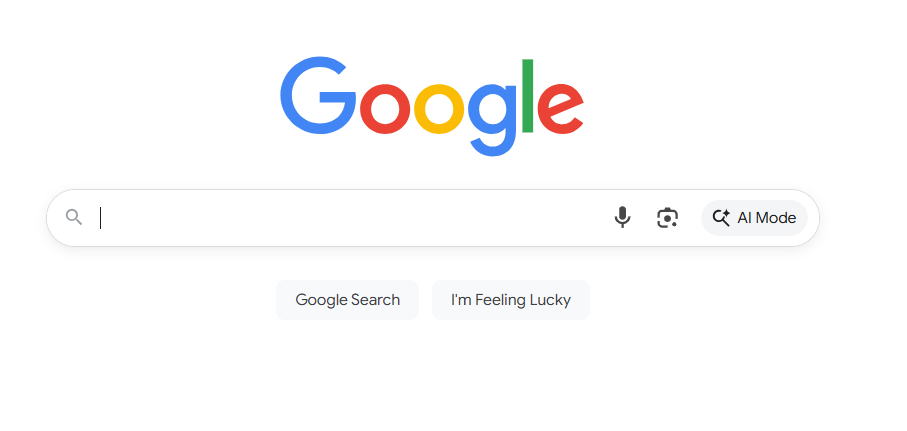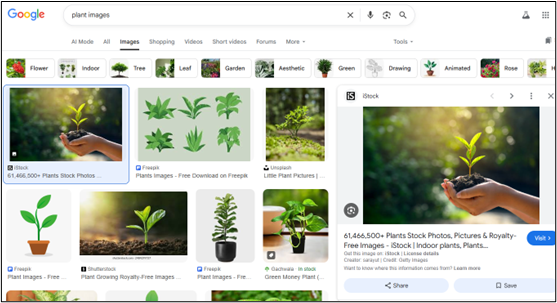Photos are everywhere on the internet and have become an integral part of the way we exchange ideas. A lot of people use fast visual signs to get facts or to decide. The nonstop stream of pictures has resulted in a demand for checking the source of a photo or locating similar ones.
That is the point at which equipment that matches pictures is helpful.

Such instruments enable you to dig up the source of a picture and to acquire additional information about it. The method is straightforward and suitable for both ordinary users and specialists who handle online content. Every image is a mystery and these tools are like detectives.
This blog provides an easy-to-follow plan that helps you grasp the concept. You understand not only the mechanism but also the ways it can be supportive in your work.
Every paragraph is designed to have a new approach and to keep the transition from one idea to another flowing.
What is Reverse Image Search?

Reverse image search means looking for passages related to a picture on the internet by means of an image. A picture is submitted or a link is given instead of a word. After that, the instrument seeks evidence to support the result with the same or most similar pictures.
Thus, in a situation when there are no words that can express your idea, this device is the one to be used.
To find out more information or to confirm the origin of a picture, people use this method. In general, it helps you to figure out if a certain photo is real or just by providing more context which was not obvious before.
How Reverse Image Search Works?

The moment when you insert a photo in the visually interactive search engine initiates the procedure. The mechanism is then responsible to analyze the given image and find the segments/parts that can be identified automatically.
Among these segments are components such as the color, the texture, the shape, the lines and many others that are the most efficient for the uniqueness of the given image. The tool does not depend on the file name for searching. However, it is the structure of the photo that is being taken into consideration.
When the apparatus defines all these elements, it makes a reference to the details with the enormous number of pictures available online. Such a comparison is done very quickly and is made possible by very powerful visual identification technology.
Next, the tool shares the list of the web pages to the user where the photos can be the same or just similar. In fact, the matches can be the exact ones or the closest versions that are capable of enlightening you on how the image was utilized or changed.
The process incorporates intelligent technology that is always in progress. By each adjustment, the instrument assists the recognition of more sophisticated patterns. That is the reason why the results keep being more precise as time goes by.
Such developments make the process faster and more disposable to people who are not professionals.
Popular Reverse Image Search Tools
There are many tools that support this process. Each one stands out with its own features, strengths and unique approach. Understanding these tools helps you choose the one that suits your needs best.
Google Image Reverse Search

Google Images offers a large database that supports detailed visual matching. Its simple interface makes it easy for people to upload photos and get results fast. You can drop a picture into the search area or paste a link.
The results often include a wide range of related pages. Many people use this feature because the results appear quickly and cover many sources. It is one of the most trusted ways to explore the internet using an image.
Bing Reverse Image Search

Bing Visual Search offers strong object recognition features. It is useful when you want to learn about products, items or places that appear in an image. The tool gives detailed results and can help you understand the content of a photo with clarity.
Many users appreciate its ability to recognize smaller details that other tools may not focus on.
TinEye Reverse Image Search

TinEye is known for its ability to track where an image first appeared. It uses a specific visual pattern mapping system. This helps it detect exact matches even when an image has been resized.
It also allows you to see how an image changed over time. Creators often use this service to protect their work and discover where their photos appear without permission.
Yandex Reverse Image Search

Yandex offers strong facial and object recognition features. It often finds sources that other tools miss. This makes it useful for identifying people, places and artworks.
Its database includes visual content from many regions which leads to unique results. This tool is valuable for people who need a broader view of how an image spreads across the world.
Mobile Apps and Browser Extensions
Many mobile apps now include features that allow you to perform a quick search directly from your camera or gallery. This is helpful when you come across something interesting while outdoors.
Browser extensions make the process even faster. They allow you to right click on any online image and run a search instantly. This smooth process saves time and supports daily browsing with ease.
How to Reverse Image Search?
Reverse image search google is easy to perform and works across computers and mobile devices. You can begin by selecting a reliable tool. The search engine gives you an option to upload an image or paste its link.
Once the picture is uploaded the system begins analyzing visual details. It then displays pages that contain the same or similar images. You can browse these results to understand more about the source and background of the picture.
The process is fast and helpful for a wide range of situations.
- Steps in the process
- Upload or paste the image link in the search bar
- Wait for the tool to study the picture
- Check the results displayed on the screen
- Explore the websites that contain matching images
- Repeat the search on another tool if needed
Reverse Image Search on Social Platforms
Reverse image search is also used across social platforms where images circulate widely. Many users rely on this method to verify posts, check originality and track discussions. Since these platforms store millions of images shared by users communities and pages the search process can reveal valuable information.
Below are the main ways reverse image search works on popular social sites and how navigational and transactional reverse image search support user intent.
Reddit reverse image search
Users upload pictures in various communities. By using a reverse image search engine you can find threads where the same picture has been discussed. This helps identify the original post and learn more context from community comments.
Facebook reverse image search
Facebook does not offer direct image search. You can upload the image to any reverse image search tool to check if it appears on public profiles pages or posts. This supports identity verification and helps detect repeated images across accounts.
Instagram reverse image search
Instagram also does not support direct image search. Users can upload the picture to an image search tool to find similar images on public accounts. This is helpful for identifying reposted pictures or ensuring that the original source is genuine.
iPhone reverse image search
iPhone reverse image search is simple and quick. You can upload a picture through Safari using the desktop site option or start a search from the Photos app through the Share menu. It helps identify objects, verify sources and find related images with ease.
Face reverse image search
Face reverse image search helps users find similar faces or related profiles by uploading a photo to an image search tool. It can show matching images across websites, public pages, or news sources. This method supports verification, identity checks, and helps confirm whether a picture appears elsewhere online.
AI reverse image search
AI reverse image search uses advanced visual recognition to study shapes, colors and patterns in a picture. It delivers more accurate matches by learning from large datasets. This method helps identify objects, confirm image sources detect edits and provide smarter results compared to traditional image search tools.
Top Use Cases for Reverse Image Search
The method supports many tasks and helps users in real life situations. The use cases below explain how powerful the process can be when used correctly.
Verifying Authenticity of Photos
Images shared online can be altered or used out of context. The process helps you confirm if a photo is real or modified. You can see when and where it first appeared. This supports informed decisions and reduces confusion in situations where accuracy matters.
Tracking Image Copyright and Ownership
Creators want to protect their work. This process allows them to check where their photos appear online. If someone uses their content without consent, they can take action. This strengthens the rights of photographers, artists and writers who share original content.
Identifying Objects Products and Places
Many people come across interesting items or locations but do not know their names. The method helps identify these visual elements. You can learn more about a product or a place by simply uploading a picture. This saves time and gives you accurate details that text based search might not offer.
Finding Higher Resolution Versions
Some online images lose quality over time. A search helps you find clearer and sharper versions. This helps when you need the photo for presentations, reports or personal use. Higher quality images also provide more detail for research.
Detecting Fake Profiles and Scams
Scams often involve stolen profile pictures. Running a quick search shows if the same photo appears on unrelated pages. If the photo appears across many unrelated accounts, it may indicate a fake profile. This protects users from falling for scams and gives them tools to identify suspicious behavior.
Advanced Tips and Best Practices
You can improve your results by following simple steps.
- Use clear and sharp images
- Crop the image to highlight the main subject
- Try more than one tool for broader results
- Save important sources for later use
- Test different upload and link methods
Limitations of Reverse Image Search
While effective, the method has certain limits.
- Some images are not indexed online
- Edited photos may not match perfectly
- Very recent images may have no results
- Private pages do not appear in search results
- Low quality images reduce accuracy
Future of Reverse Image Search Technology

The future of this technology shows great promise. Systems are becoming smarter and more aware of complex details within images. Future tools will provide richer explanations of each match.
Artificial intelligence will support deeper analysis which will help users understand not only where an image came from but how it changed across time.
You will also see more accuracy in detecting edited content. Mobile integration will grow and more apps will offer built in visual search features. All these advances point toward a future where users can trust the accuracy and depth of online image results.
Summing Up,
Reverse image search is a simple and effective way to explore the true story behind any picture. It helps identify objects, track ownership, confirm authenticity and protect users from online scams. Tools like Google lens reverse image search and other platforms make the process accessible to everyone. With the right approach image search becomes a powerful method for gaining knowledge and clarity.
This guide offers a complete understanding that helps users enjoy a smooth and confident experience. It also encourages them to explore the full potential of reverse image search tools and enjoy trustworthy results every time.
Do not stop here. Read our complete resource on image search technique and reverse video search to expand your knowledge even further.
Connect With Us For More Information!

Experienced Digital Marketing Specialist with a passion for driving online visibility and growth. I am dedicated to driving digital success through effective SEO, SMO, PPC, link building, and Guest Posting outreach strategies. I am eager to leverage my skills and experience to help businesses thrive in the competitive online landscape.


 +91-6306894259
+91-6306894259 info@websfirm.com
info@websfirm.com 117C Basera Bihar Kanchana Bihari Marg, Kalyanpur, Lucknow 226022
117C Basera Bihar Kanchana Bihari Marg, Kalyanpur, Lucknow 226022



